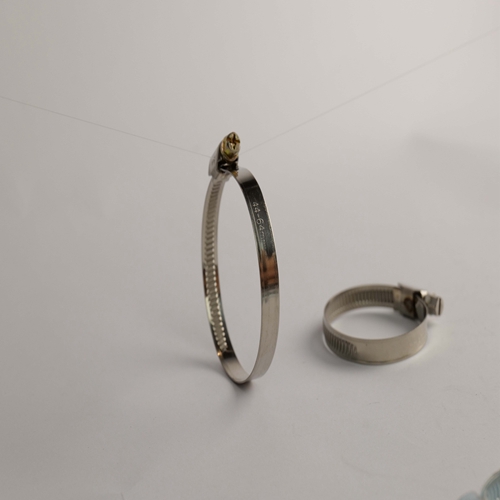- Phone:+86-17331948172 +86-0319-8862898
- E-mail: inquiry@puxingclamp.com
ຕ.ລ. . 10, 2024 07:50 Back to list
hose clamp with spring factories
Hose Clamps with Spring A Comprehensive Overview of Their Manufacturing
Hose clamps are essential components in a variety of industrial applications, from automotive engineering to plumbing systems. Among the different types of hose clamps, those equipped with springs have gained significant traction due to their adjustable tension and ability to maintain a secure seal under varying conditions. In this article, we will explore the factories that specialize in manufacturing hose clamps with springs, focusing on their processes, quality control measures, and the challenges faced in production.
Understanding Hose Clamps with Springs
Hose clamps are mechanical devices used to attach and seal a hose onto a fitting. They come in various designs, but spring hose clamps, also known as constant tension clamps, are favored for their ability to adjust automatically to changes in temperature and pressure. This feature prevents leaks that can occur when hoses expand or contract, making them essential in high-performance applications.
Spring hose clamps are typically made from materials such as stainless steel, carbon steel, or plastic. The choice of material can significantly influence the clamp's durability, resistance to corrosion, and overall performance. Factories that produce these clamps focus on achieving a balance between cost-efficiency and high quality.
Manufacturing Processes
The manufacturing of hose clamps with springs involves several key processes
1. Material Selection Factories must choose the right materials that match the intended use. Stainless steel is commonly used for its corrosion resistance, while carbon steel is often chosen for its strength and rigidity.
2. Cutting and Shaping Raw materials are cut into specific lengths and shapes. This is usually done using high-precision laser cutting machines or stamping dies that ensure accurate dimensions.
3. Welding For some designs, components of the hose clamp are welded together to create a durable bond. High-frequency welding machines are employed to achieve strong joints that can withstand high pressures.
4. Spring Assembly In spring hose clamps, a spring mechanism is integrated, which is typically coiled and designed to provide constant pressure. Automated assembly lines are often used to streamline this process, ensuring consistency.
hose clamp with spring factories

5. Finishing After assembly, the clamps undergo surface treatment processes, such as galvanizing or electroplating, to enhance their resistance to corrosion and wear. This is crucial in industries where the clamps may be exposed to harsh environments.
6. Quality Control Rigorous quality checks are critical in the production of hose clamps. Factories implement various testing methods, including tensile testing, pressure tests, and dimensional inspections, to ensure each clamp meets industry standards and customer specifications.
Challenges in Production
Manufacturers face several challenges in the production of hose clamps with springs
1. Material Sourcing The price and availability of high-quality raw materials can fluctuate, impacting production costs. Manufacturers must establish reliable relationships with suppliers to mitigate this risk.
2. Technological Advancements As engineering requirements evolve, factories must continuously update their machinery and processes to keep pace with new technologies and production techniques.
3. Market Competition The global market for hose clamps is competitive, leading to pressures on price and quality. Manufacturers must balance cost-savings with maintaining high standards of quality to stay competitive.
4. Environmental Regulations Compliance with environmental regulations regarding waste disposal and emissions can be challenging. Factories need to invest in cleaner technologies and sustainable practices to minimize their ecological footprint.
Conclusion
Hose clamps with springs are vital in ensuring efficient and leak-free connections in a wide range of applications. The factories that manufacture these clamps play a crucial role in maintaining quality, safety, and reliability. By investing in advanced technologies and adhering to strict quality control measures, manufacturers can meet the demands of an ever-evolving market while responding to the challenges outlined above. As we look to the future, the industry will continue to innovate, ensuring that hose clamps remain a robust solution for various mechanical and hydraulic systems.
-
Heavy Duty Hose Clamp | Premium Durability & Security
NewsAug.01,2025
-
Large Stainless Steel Adjustable American Type Hose Clamp - Hebei Pux Alloy Technology Co., Ltd.
NewsAug.01,2025
-
Large Stainless Steel Adjustable American Type Hose Clamp - Hebei Pux Alloy Technology Co., Ltd
NewsAug.01,2025
-
Large Stainless Steel Adjustable American Type Hose Clamp - Hebei Pux Alloy Technology Co., Ltd.
NewsJul.31,2025
-
Large Stainless Steel Adjustable American Type Hose Clamp - Hebei Pux Alloy Technology Co., Ltd | Corrosion Resistance, High Torque
NewsJul.31,2025
-
Durable Hose Clamps with GPT-4 Turbo Tech | Secure Sealing
NewsJul.31,2025




